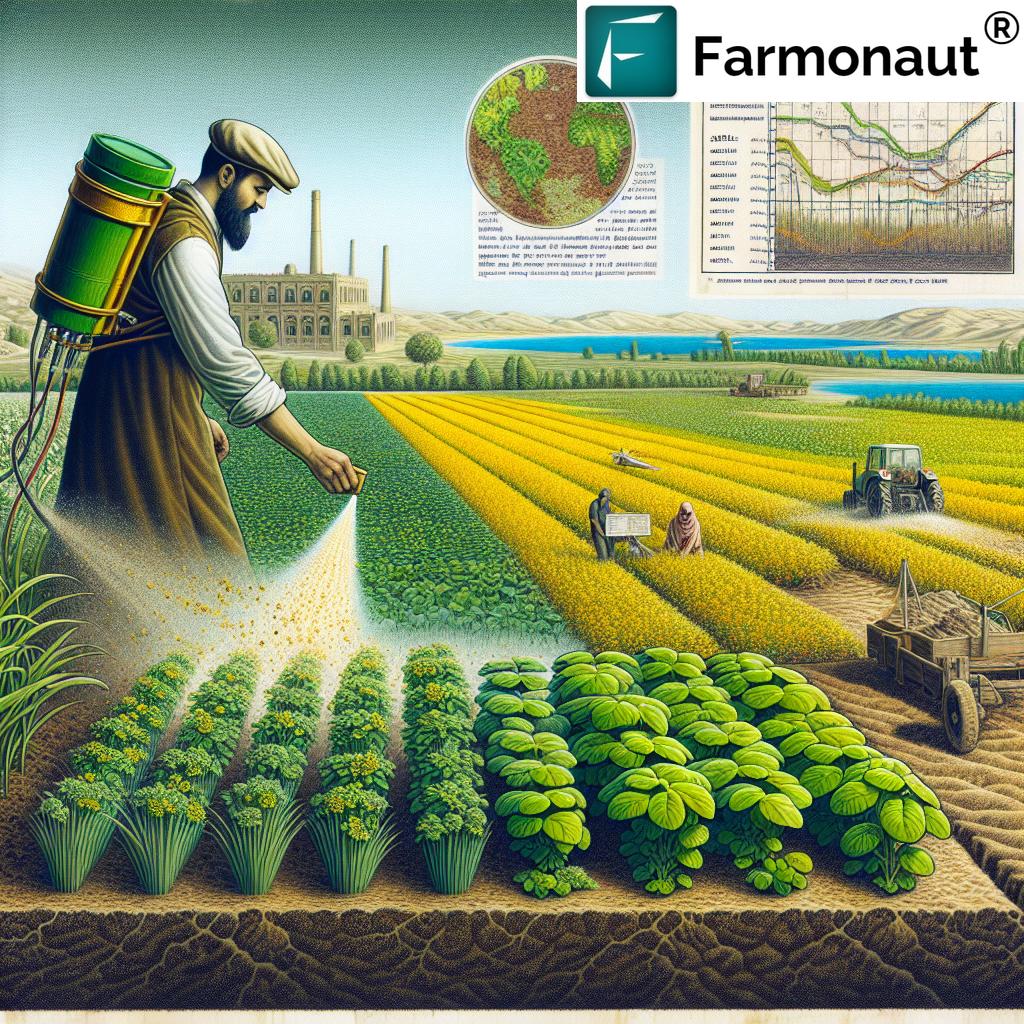How to Fix Zinc Deficiency in Plants: 7 Powerful Solutions
Zinc deficiency in plants is a widespread yet often-overlooked challenge in global agriculture. As an essential micronutrient, zinc is vital for plant growth, enzyme activation, protein synthesis, and the production of growth hormones. Deficiency can severely impact both crop yield and quality, threatening food security and farmer livelihoods. Recognizing, preventing, and remedying this nutrient challenge are critical steps for sustainable agricultural production.
In this comprehensive guide, we delve into the causes of zinc deficiency, soil conditions that exacerbate the problem, key symptoms to look for in your crops, and most importantly, 7 actionable strategies for addressing nutrient deficiencies in the field.
Understanding Zinc Deficiency in Plants
Zinc deficiency in plants arises when soils fail to supply adequate levels of zinc for normal growth and development. This can occur due to multiple interrelated factors including soil pH, organic matter content, environmental conditions (such as drought or heavy rainfall), or agricultural practices like continuous cropping without proper replenishment.
Zinc acts as a cofactor for over 300 enzymes in plants. Its crucial functions include supporting chlorophyll production, facilitating protein synthesis, enabling carbohydrate metabolism, and regulating the synthesis of plant hormones like auxins. Practically every crop grown in alkaline or sandy soils is susceptible if not managed proactively.
Causes of Zinc Deficiency in Crops
Understanding the underlying zinc deficiency causes is fundamental to addressing nutrient deficiencies effectively. Let us explore key drivers:
1. Soil Conditions Impacting Zinc Availability
-
Soil pH and Micronutrient Availability:
In alkaline soils (pH > 7.0), zinc availability is significantly reduced. Even if total soil zinc levels are adequate, high pH converts it to less soluble, unavailable forms, hampering zinc uptake in crops. -
Soil Texture & Organic Matter Content:
Sandy soils with low organic matter are more prone to rapid leaching of zinc, resulting in deficiency. In contrast, soils rich in humus tend to retain more micronutrients. -
Excessive Phosphorus Application:
Overuse of phosphorus fertilizers can interfere with zinc uptake, especially in soils already low in zinc. This nutrient imbalance is a leading cause of zinc deficiency in soil.
2. Environmental Factors
- Drought Stress: Limited water supply or erratic irrigation reduces overall nutrient uptake, worsening zinc deficiencies.
- Heavy Rainfall: Repeated rainfall events can leach zinc and other micronutrients out of the root zone, especially in light-textured soils.
3. Agricultural Practices and Fertilization
- Continuous Cropping & Repeated Planting: Growing the same crops or crop types over multiple seasons without nutrient replenishment rapidly depletes zinc and other micronutrients.
- Inadequate or Neglected Fertilization Strategies: Failure to include zinc in fertilization programs, especially for high-demand crops, causes imbalances and deficiencies.
Together, these factors often act synergistically, meaning that addressing one without the others may not fully resolve the problem. Comprehensive soil management for zinc is vital.
Recognizing Symptoms of Zinc Deficiency in Crops
Recognizing symptoms of zinc deficiency early is crucial for effective and timely intervention. Deficient plants often display distinctive leaf symptoms and morphological disorders.
- Chlorosis: Interveinal yellowing of leaves (especially young leaves), leaving veins green while the areas in between turn yellow.
- Stunted Growth: Reduced plant size due to shortened internodes, giving crops a dwarfed appearance.
- Leaf Malformations: Narrow, small leaves with wavy margins are telltale signs. In severe cases, leaves curl or become distorted.
- Necrotic Spots: The presence of dead, brown spots or areas on leaves—often leading to premature leaf drop.
- Rosetting: Clustered formation of leaves at the shoot tip caused by shortened internodes, giving a “rosette” appearance.
“Zinc deficiency symptoms appear in over 30% of global agricultural soils, impacting plant growth and productivity.”
Impact of Zinc Deficiency on Crop Production
Zinc deficiency directly affects crop yield and quality. Here’s what can happen if deficiencies are left untreated:
- Yield Reductions: Severe zinc deficiencies can reduce yields by 30–50% in cases like wheat, maize, and rice.
- Quality Issues: Poor grain filling, misshapen fruits, and lower protein content compromise marketability and nutritional value.
- Vulnerability to Stress: Zinc-deficient plants are more susceptible to pest and disease attacks, and may fail under drought or other stresses.
- Long-Term Soil Health: If soil zinc depletion is not addressed, overall soil fertility and productivity decline, compounding agricultural challenges.
Recognizing and correcting zinc deficiencies builds more resilient, productive farming systems—making it essential for every farmer and agronomist to understand.
Zinc Deficiency: Symptoms, Causes, and Solutions Comparison Table
| Crop Type | Common Symptoms | Estimated Prevalence | Main Causes | Recommended Solution |
|---|---|---|---|---|
| Wheat | Interveinal chlorosis in young leaves; stunted spikes; spikelet sterility | Up to 40% in affected regions | High pH soils, overuse of phosphorus, low organic matter | Zinc sulfate soil application at 20–25 kg/ha; foliar spray 0.5% ZnSO₄ |
| Maize | White stripes on young leaves; poor cob formation; rosetting | 30–50% globally where maize is dominant | Sandy soils, continuous cropping, drought stress | Zinc chelate seed treatment; foliar spray at V4–V6 stages |
| Rice | Bronzing of leaves; stunted seedlings; “white leaf” syndrome | 30–50% in Asia’s major rice belts | Alkaline pH, waterlogged soils, phosphorus excess | Zinc sulfate basal application; foliar 0.5% ZnSO₄ at tillering |
| Cotton | Small, misshapen, bronze-colored leaves; poor fruit set | Up to 35% in calcareous soils | Calcareous/alkaline soils, low zinc reserves | Zinc sulfate soil or foliar application; crop rotation with legumes |
| Soybean | Reduced leaf size; yellowing; delayed maturity | 20–30% (in at-risk zones) | High pH, low organic matter, continuous cropping | Soil-applied zinc chelates; maintain soil pH < 7.0 |
| Vegetables (e.g., Tomato) | Interveinal yellowing; malformed leaves and fruit | 20%+ in intensively cultivated areas | Phosphorus buildup, sandy texture, water stress | Integrated soil/foliar zinc (ZnSO₄); organic matter addition |
7 Powerful Solutions for Addressing Zinc Deficiency in Plants
The following management strategies are scientifically proven and widely implemented in successful, sustainable farms. Employ a combination of these tactics for lasting results in zinc deficiency management:
1. Conduct Comprehensive Soil Testing
- Perform regular soil testing for total and available zinc. Assess soil pH and organic matter content to identify underlying causes of deficiency.
- Action: Use reliable laboratories or digital farm management apps like Farmonaut for actionable satellite and AI-driven crop/soil insights.
Tip: Annual soil tests are best, especially before crop rotation changes or after heavy rainfall seasons.
2. Optimize Soil pH for Improved Zinc Uptake
- If soil pH is above 7.0, apply acidifying agents (like sulfur) to gradually lower pH, making micronutrients more available to plants.
- Avoid frequent liming unless pH is low, as excessive lime can reduce zinc availability and other micronutrients.
3. Targeted Zinc Fertilizer Application
- Soil Zinc Application: Use fertilizers like zinc sulfate (ZnSO₄), zinc oxide, or chelated zinc. Broadcast or band placement (targeting root zones) works well in most crops.
- Recommended base rates: 20–30 kg/ha ZnSO₄ or as per soil-test results. Over-application should be avoided.
For precise decision-making, advanced solutions like Farmonaut provide real-time satellite data and weather-adaptive recommendations for optimal fertilizer application scheduling.
4. Use Foliar Spray for Quick Correction
- Foliar sprays of zinc sulfate (usually 0.5% solution) deliver rapid relief, especially when deficiency symptoms are already visible.
- Repeat applications 2–3 times at 14–21 day intervals for persistent cases, targeting the early vegetative and reproductive stages of growth.
5. Implement Zinc-Enhanced Seed Treatment
- Seed coating or priming with Zn compounds ensures immediate zinc supply to seedlings, giving a strong start and improved tolerance to early deficiencies.
- This strategy prevents “hidden hunger” in the most sensitive stages of crop development.
6. Enrich Soils with Organic Matter
- Incorporate organic matter (compost, green manure, farmyard manure) to improve soil structure, water retention, and zinc retention.
- Organic matter and zinc retention go hand-in-hand: humus complexes bind micronutrients, preventing leaching and increasing availability.
7. Integrate Sound Cultural and Irrigation Practices
- Crop rotation with legumes or deep-rooted species improves overall soil fertility and micronutrient cycling.
- Proper irrigation management—not too dry nor waterlogged—enhances zinc uptake in crops. Avoid frequent, shallow irrigation that encourages leaching.
- Remove excess phosphorus build-up by balancing fertilization schedules.
How Farmonaut Empowers Zinc Management and Precision Farming
Farmonaut is not a marketplace nor a farm input supplier, but an agricultural technology company on a mission: making precision agriculture affordable, data-driven, and accessible to farmers everywhere. Here’s how our platform strengthens zinc deficiency management:
-
Satellite-Based Crop Health Monitoring:
Our multispectral satellite imagery detects early-stage nutrient deficiencies and stress signals in crops. This enables timely action—before zinc deficiency symptoms become visually severe. -
AI-Powered Jeevn Advisory System:
Receives real-time crop and weather data, providing tailored recommendations for fertilizer application, irrigation, and cultural practices, all optimized for preventing and addressing zinc deficiency. -
Blockchain-Based Product Traceability:
For those supplying into certified markets, product traceability solutions ensure zinc-fortified or high-quality produce can be transparently authenticated across the value chain. -
Fleet and Resource Management:
Manage and optimize fertilizer and input application across large farms using Farmonaut Fleet Management, reducing operational costs while ensuring all at-risk fields are covered. -
Soil Moisture and Carbon Footprint Tracking:
Track soil moisture (key for zinc uptake) and monitor farm sustainability with carbon footprinting tools—all from the same dashboard. -
Insurance and Crop Loan Support:
Our satellite-based verification helps farmers access crop loans and insurance more efficiently, crucial for investing in essential zinc fertilizers.
Check the API developer docs for integration support.
Farmonaut Subscription Options
For farmers, agribusinesses, and researchers interested in leveraging satellite-based precision agriculture and advanced zinc management tools, Farmonaut offers scalable, subscription-based services. Select the package that matches your area, crop monitoring frequency, and farm management needs.
Frequently Asked Questions (FAQ)
What makes zinc essential for plant growth?
Zinc is an essential micronutrient needed in small amounts for enzyme activation, protein synthesis, hormone production (such as auxin), and optimal growth and yield in all crops.
Which crops are most affected by zinc deficiency?
Major cereals like wheat, rice, and maize are highly sensitive, but zinc deficiency in plants can occur in soybean, cotton, and many vegetables, especially when soil pH is high or organic matter is low.
How do I prevent zinc deficiency from occurring again?
Maintain regular soil testing, balance your fertilization strategies (including micronutrients), add organic matter, and monitor soil pH. Crop rotation and irrigation management also help in preventing deficiencies.
Are organic amendments sufficient to fix zinc deficiency?
Organic matter improves zinc retention and releases micronutrients over time but is often not enough where severe deficiency exists. Zinc fertilizer application (soil or foliar) is usually needed for rapid correction.
How can digital tools like Farmonaut support zinc management?
Farmonaut provides real-time crop health maps, AI-driven advisories for nutrient management (including zinc), and tracks both irrigation and resource usage. These features empower swift, data-backed decisions to prevent and manage zinc deficiency.
What happens if I neglect zinc deficiency in my field?
You risk significant yield reductions (often >30%), poor quality produce, and increased crop susceptibility to drought, pests, and disease. Over time, soil productivity declines, eroding farm income and sustainability.
Conclusion: Improving Crop Yield with Zinc Management
Zinc deficiency in plants is a silent, yet devastating, barrier to higher crop yields and agricultural quality—especially in regions with alkaline soils, low organic matter, or imbalanced fertilization practices. By understanding symptoms of zinc deficiency, zinc deficiency causes, and implementing a robust mix of fertilization, soil management for zinc, and modern technologies, farmers can address nutrient deficiencies before they become yield-limiting.
Farmonaut’s platform integrates precision farm management, data-driven advisories, traceability, and resource optimization, making these solutions scalable and affordable for everyone from smallholders to large agribusinesses. With satellite-driven, AI-backed insights, regular soil testing, balanced fertilizer application, and smart rotation and irrigation practices, sustainable improvement in crop yield with zinc is within reach.
Don’t let zinc deficiency restrict your field’s performance. Take proactive measures—adapt your strategies, and let technology guide your way to healthier, more productive crops!





















